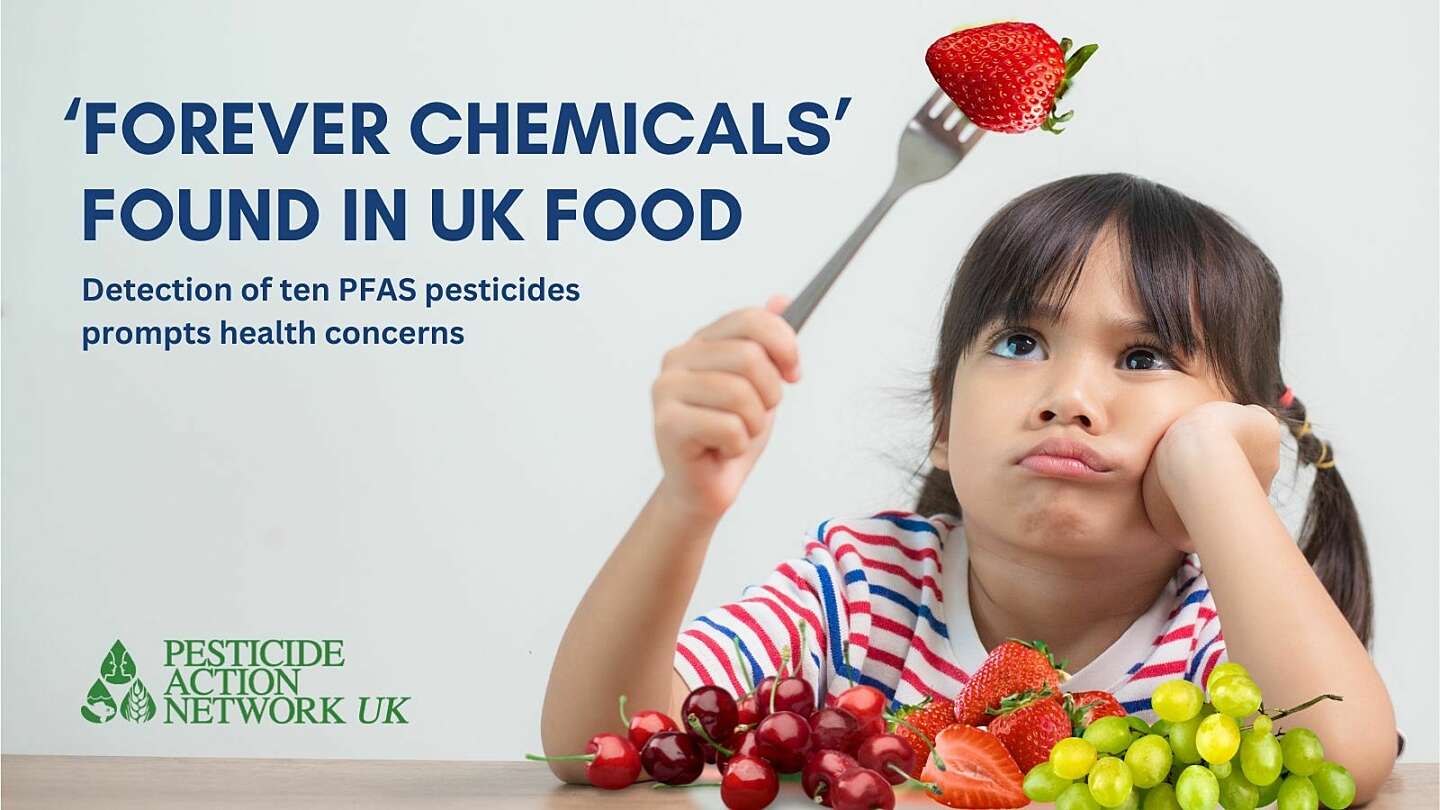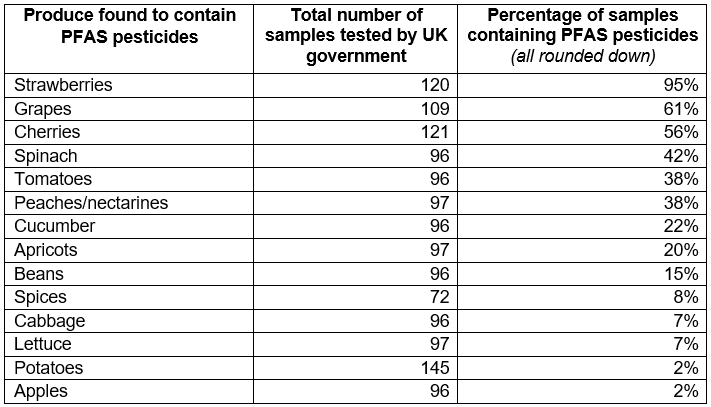Concern over ‘forever chemicals’ detected in UK food

Pesticide Action Network UK (PAN UK) has analysed the latest results from the UK government’s residue testing programme, and found 10 different PFAS pesticides were present in spices and a range of fruit and vegetables.
Foods with high levels of PFAS include grapes, cherries, spinach and tomatoes. Strawberries were found to be the worst offenders, with 95% of the 120 samples tested by the government in 2022 containing PFAS pesticides.
As a family of roughly 10,000 chemicals, PFAS have been branded as ‘forever chemicals’ because of their ability to persist in the environment and accumulate in the blood, bones and tissue of living organisms, including humans.
Estimates of the time it takes PFAS to fully degrade in the environment range from a decade to more than 1,000 years.
While they're generally used in household products such as non-stick cookware, certain pesticides contain PFAS, which then make it into human bodies via diet.
Peer-reviewed studies conducted in other countries have connected PFAS exposure to a range of serious health problems including an increased risk of cancer and decreases in both fertility and the immune system’s ability to fight infections. There is particular concern over childhood exposure, since PFAS has also been linked to behavioural changes as well as developmental effects or delays in children, including low birth weight and accelerated puberty.
Nick Mole, policy officer from PAN UK, said: “Given the growing body of evidence linking PFAS to serious diseases such as cancer, it's deeply worrying that UK consumers are being left with no choice but to ingest these chemicals, some of which may remain in their bodies long into the future.
"With some plastic food packaging also contaminated with PFAS, and PFAS present in UK drinking water and soil, we urgently need to develop a better understanding of the health risks associated with ingesting these ‘forever chemicals’ and do everything we can to exclude them from the food chain."

For more about the report's findings head to the blog on the PAN website here.